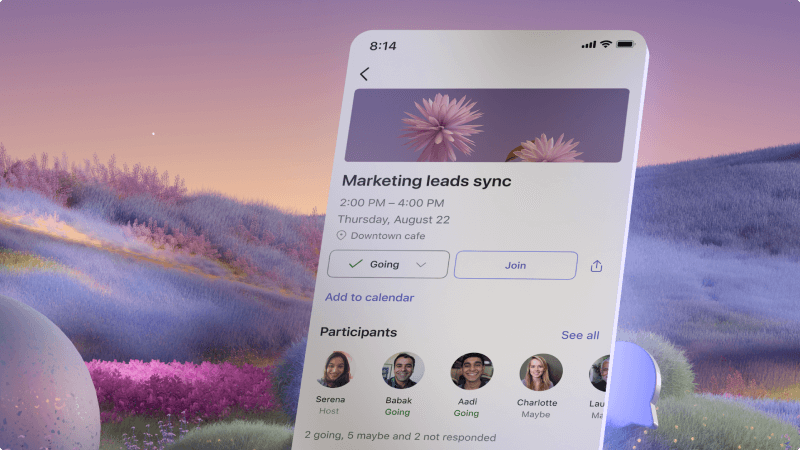Set up online meetings with Teams

You'll need to connect with partners, clients, customers or colleagues, whether that's in-person or online. With Microsoft Teams, it's simple to create an online meeting you can send, whether you create your meeting invite in Outlook or Teams. Your client can join the meeting from their computer or a mobile device.
What will I learn?
-
How to schedule a meeting with clients using Microsoft Teams or Outlook
-
How to help a client join a meeting
What do I need?
-
Microsoft Teams
-
Microsoft Outlook
-
3 minutes

-
Open Teams and go to the Calendar.
-
Select New meeting.
-
Fill in the details for your meeting, including:
-
Title
-
Add attendees, including your external clients
-
Set a time and date
-
Add location if needed
-
Add details about the meeting, like what it's for
-
When you're done, select Send. Your client(s) will receive an invite that they will use to join the meeting. When they join, you'll be notified so that you or someone else already in the meeting can admit them.
-
Open Outlook and go to the Calendar.
-
Select New event.
-
Fill in the details for your meeting, including:
-
Title
-
Add attendees, including your external clients
-
Set a time and date
-
Add location if needed
-
Add details about the meeting, like what it's for
-
-
Select the Teams meeting toggle to make sure it's an online meeting.
-
When you're done, select Send.
Your client(s) will receive an invite that they will use to join the meeting. When they join, you'll be notified so that you or someone else already in the meeting can admit them.
People can join a Teams meeting from a computer or their mobile device without having a Microsoft 365 account. Choose the option for how to join the call:
-
Go to the meeting invite and select Join meeting.
-
A web page will open where you'll see two choices: Download the Windows app or Join on the web instead. If you join on the web, you can use either Microsoft Edge or Google Chrome. Your browser may ask if it's okay for Teams to use your mic and camera. Be sure to allow it so you'll be seen and heard in your meeting.
-
Enter your name and choose your audio and video settings.
-
When you're ready, hit Join now.
-
This will bring you into the meeting lobby. We'll notify the meeting organizer that you're there, and someone in the meeting can then admit you.
-
In the meeting invite, select Join meeting.
-
If you don't already have the Teams mobile app, you'll be taken to your app store to download it.
-
Download and open the app.
If you have an Android device, open the app right from the app store page.
If you have an iOS device, tap the meeting link again to open the app.
Teams will ask if it's okay to use your mic. Be sure to allow it so others in the meeting will be able to hear you. -
Next, you'll be given two options for joining your meeting: Join as a guest or Sign in and join. Choose Join as a guest.
-
Type your name and tap Join meeting.
-
This will bring you into the meeting lobby. We'll notify the meeting organizer that you're there, and someone in the meeting can then admit you.








